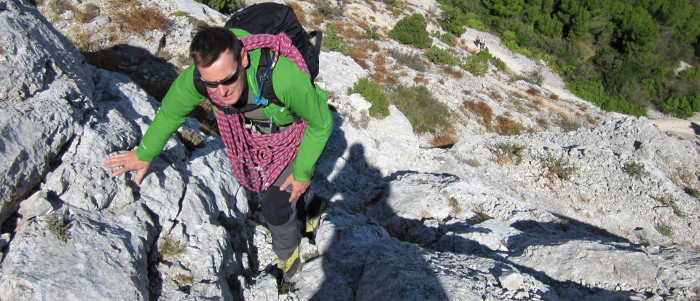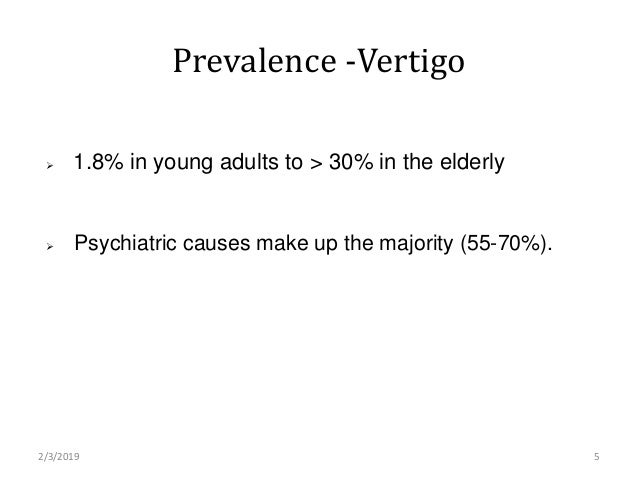Titrate is a novel diagnostic approach to determining the probable etiology of dizziness or vertigo. dua the approach uses the ti ming of the symptom, the tr iggers that provoke the symptom, a nd a t. The vestibular nuclei, cerebellum, brainstem, spinal cord, and vestibular cortex make up the central vestibular system. central abnormalities cause approximately 25% of dizziness experienced by patients. 45 common central etiologies include vestibular migraine and vertebrobasilar ischemia. patients with central pathology may present with disequilibrium and ataxia rather than true vertigo. however, vertigo can be a presenting symptom of an impending cerebrovascular event. 46,47.
Vertigo Causes Symptoms And Treatment
An approach to acute vertigo k bateman 1 mb chb, fcp neurol (sa); c rogers dua msc (audiology); e meyer vertigo k approach tiga mb chb, fcs (orl) 1 division of neurology, department of medicine, faculty of health sciences, groote schuur hospital and university of cape town, south africa. Treatment of vertigo includes the epley maneuver (canalith repositioning) and vestibular rehabilitation for benign paroxysmal positional vertigo, intratympanic dexamethasone or gentamicin for.
Vertigo can happen to anyone, and there is no way to prevent the first episode. because vertigo can be associated with an intense sense of imbalance, it is important to avoid situations in which a fall could cause significant harm, like climbing a ladder or working on a slanted roof. Vestibular neuritis, the second most common cause of vertigo, is thought to be of viral origin. it most commonly affects persons 30 to 50 years of age. men and women are affected equally. episodic vertigo in a patient with a history of migraine headaches suggests vestibular migraine. 48 vestibular migraine is one of the most common causes of episodic vertigo among children. 49 among adults, it is three times more common among women and more often occurs between 20 and 50 years of age. 50 a family history of vestibular migraine is a risk factor. The traditional approach, which relies on dizziness symptom quality or type (i. e. vertigo, presyncope, or disequilibrium) to guide inquiry, does not distinguish benign from dangerous causes, and is inconsistent with current best evidence. Review, general approach to the patients with dizziness and the most common vertigo mediated diseases in ent routine is presented. k k e e y y w w o o r r d d s s : : dizziness; nystagmus, pathologic.
Vertigo Causes And Symptoms
The underlying pathology is excess endolymphatic fluid pressure leading to inner ear dysfunction; however, the exact cause is unknown. 40 patients manifest a vertigo k approach unidirectional, horizontal-torsional nystagmus during vertigo episodes. An approach to acute vertigo k bateman 1 mb chb, fcp neurol (sa); c rogers 2 msc (audiology); e meyer 3 mb chb, fcs (orl) 1 division of neurology, department of medicine, faculty of health sciences, groote schuur hospital and university of cape town, south africa. Dec 12, 2020 · vertigo is a sensation of feeling off balance. if you have these dizzy spells, you might feel like you are spinning or that the world around you is spinning.
Dizziness Approach To Evaluation And Management American Family
Vertigo is a dizziness or a spinning sensation with causes ranging from ear problems to stroke. reviewed by a board-certified neurologist. rod brouhard is an emergency medical technician paramedic (emt-p), journalist, educator, and advocate. Vertigo is a type vertigo k approach of dizziness that forces you to feel as if your surroundings or you are spinning out of control. imagine yourself standing outdoors, relaxing, and looking at the beautiful sceneries around you, then suddenly, you feel like you are riding a merry-go-round.
A New Diagnostic Approach To The Adult Patient With Acute

Vertigo 7 Triggers And 6 Conditions Associated With It
Treatment of bppv consists of a canalith repositioning procedure such as the epley maneuver, which repositions the canalith from the semicircular canal into the vestibule30 (figure 324). the success rate is approximately 70% on the first attempt, and nearly 100% on successive maneuvers. 29 home treatment with brandt-daroff exercises (www. youtube. com/watch? v=vozxttudq00) can also be successful. if there is no improvement with repeated repositioning maneuvers, or if atypical or ongoing nystagmus with nausea is present, another cause should be considered. 27 pharmacologic treatment has no role in the treatment of bppv. vestibular suppressant medications should be avoided because they interfere with central compensation and may increase the risk of falls. 20,31 vestibular neuritis is treated with medications and vestibular rehabilitation20 (table 320,24). antiemetics and antinausea medications should be used for no more than three days because of their effects in blocking central compensation. vertigo and associated nausea or vomiting can be treated with a combination of antihistamine, antiemetic, or benzodiazepine. although systemic corticosteroids have been recommended as a treatment for vestibular neuritis, there is insufficient evidence for their routine vertigo k approach use. 36 antiviral medications are ineffective. 37 first-line treatment of meniere disease involves lifestyle changes, including limiting dietary salt intake to less than 2,000 mg per day, reducing caffeine intake, and limiting alcohol to one drink per day. daily thiazide diuretic therapy can be added if vertigo is not controlled with lifestyle changes. 41 transtympanic injections of glucocorticoids42 and gentamicin43 can improve vertigo. although transtympanic glucocorticoids may improve hearing, transtympanic gentamicin is associated with hearing loss and should be reserved for patients who already have significant hearing loss. 20 vestibular suppressant medications may be used for acute attacks. 20 prochlorperazine, promethazine, and diazepam (valium) have been effective. surgery is an option for patients with refractory symptoms. 41 vestibular exercises may be helpful for patients with unilateral peripheral vestibular dysfunction. 44 vestibular rehabilitation may be needed for persistent tinnitus or hearing loss. initial management focuses on identifying and avoiding migraine triggers. tertekan relief is recommended, and adequate sleep and exercise are encouraged. vestibular suppressant medications are helpful. 20 because of a lack of well-designed randomized clinical trials, prevention recommendations are based on expert opinion. 52 preventive medications include anticonvulsants, beta adrenergic blockers, calcium channel blockers, tricyclic antidepressants, butterbur extract, and magnesium. the goal is a 50% reduction in attacks. 20 it is not clear whether migraine abortive therapy is effective in treating vertigo. 20. Vertigo is a sensation of feeling off balance. if you have these dizzy spells, you might feel like you are spinning or that the world around you is spinning.
Vertigo. vertigo is a feeling of dizziness that occurs without any accompanying movement. it’s caused by your senses telling your brain that your body is off balance, even though it isn’t. With episodic triggered symptoms, patients have brief episodes of intermittent dizziness lasting seconds to hours. common triggers are head motion on change of body position (e. g. rolling over in bed). episodic triggered symptoms are consistent with a penaksiran of benign paroxysmal positional vertigo (bppv). with continuous vestibular symptoms, patients have persistent dizziness lasting days to weeks. the symptoms may be due to traumatic or toxic exposure. classic vestibular symptoms include continuous dizziness or vertigo associated with nausea, vomiting, nystagmus, gait instability, and head-motion intolerance. in the absence of syok or exposures, these findings are most consistent with vestibular neuritis or central etiologies. however, central causes can also occur with patterns triggered by movement. Assessing a patient with vertigo is a diagnostic challenge for the clinician, particularly in the acute setting where symptoms can be extremely debilitating. 1 however, the most common cause of vertigo, benign paroxysmal positional vertigo (bppv), can be diagnosed and often successfully treated within a consultation. See full list on aafp. org.

See full list on drugs. com. Vertigo is that unsettled feeling of moving or spinning when you're perfectly still. sometimes a person experiencing vertigo will feel like the room is moving when it actually isn't. dizziness is often vertigo k approach a descriptor used for vertigo. read on. See full list on drugs. com.
1. post re, dickerson lm. dizziness: a diagnostic approach. am fam physician. 2010;82(4):361368, 369. Vertigo is the feeling of motion when there is no motion, such as you spinning or your environment spinning. spinning yourself round and round, then suddenly stopping, can produce temporary vertigo. answer vertigo is the feeling of motion w. Feb 11, 2020 · vertigo is only one type of dizziness. other symptoms that patients may identify as dizziness include presyncopal faintness, disequilibrium, and nonspecific or ill-defined light-headedness. the initial approach to the patient who complains of dizziness is to localize the cause of the symptom into one of these broad categories. This article is meant to simplify the approach to the dizzy patient in a practical manner, focusing on the “can’t miss” diagnoses that fall along this path. first, many approaches to the workup of the dizzy patient focus on separating your patients into “pre-syncope vs vertigo” before starting your workup.

Post a Comment for "Vertigo K Approach"